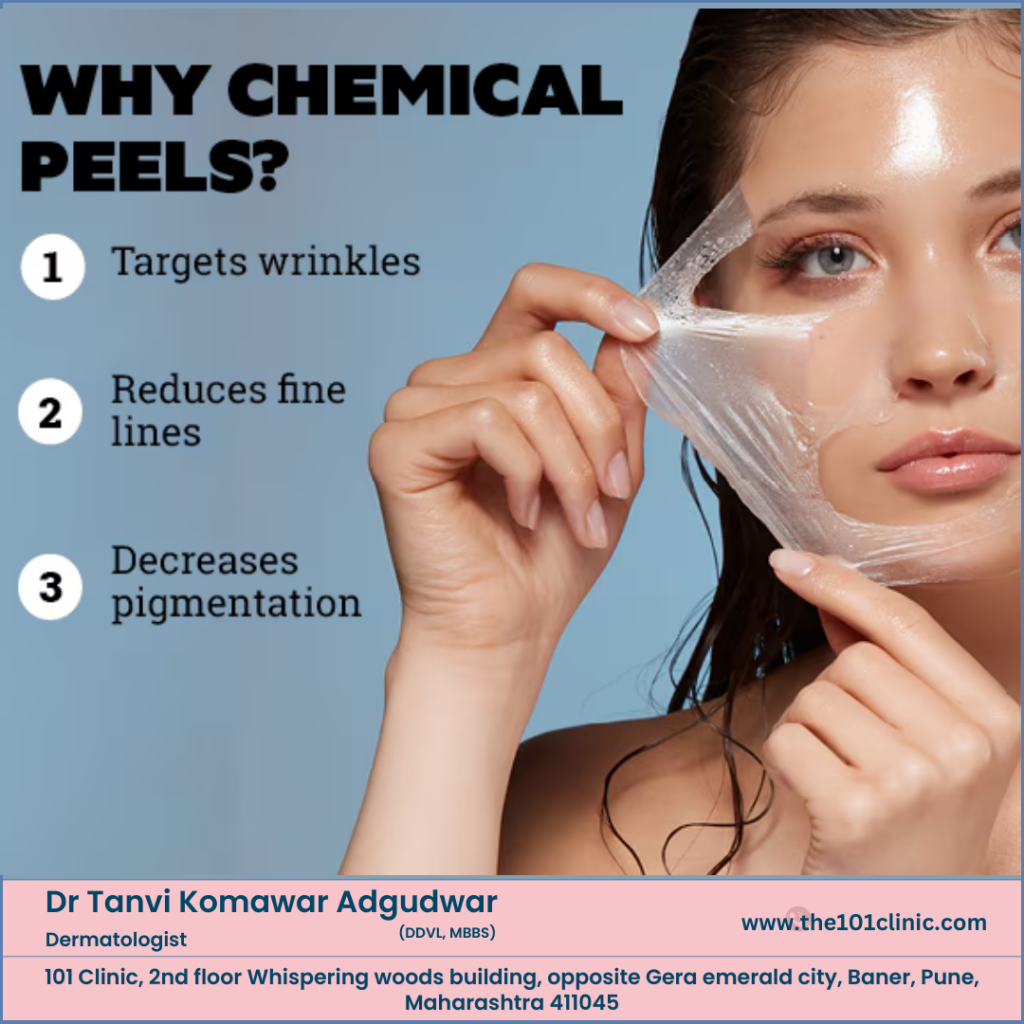Chemical peels are a popular and effective way to rejuvenate your skin, improve texture, and address concerns like acne scars, hyperpigmentation, and fine lines. While professional peels offer more intensive results, at-home chemical peels are an excellent option for maintaining skin health between professional treatments or for those new to peels. Here’s your complete guide to safely and effectively trying chemical peels at home, brought to you by The 101 Clinic, your trusted partner in skincare.
What Are Chemical Peels?
Chemical peels use acids to exfoliate the outer layers of your skin, revealing smoother, brighter skin underneath. At-home peels typically contain milder acids, such as:
- Alpha Hydroxy Acids (AHAs): Glycolic acid, lactic acid (ideal for dry or aging skin).
- Beta Hydroxy Acids (BHAs): Salicylic acid (great for oily or acne-prone skin).
- Polyhydroxy Acids (PHAs): Gluconolactone (gentle and suitable for sensitive skin).
Benefits of At-Home Chemical Peels
- Improved Skin Texture: Removes dead skin cells for a smoother surface.
- Brightened Complexion: Fades dark spots and evens skin tone.
- Acne Management: Unclogs pores and reduces inflammation.
- Anti-Aging Effects: Diminishes fine lines and stimulates collagen production.
How to Choose the Right Peel
- Skin Type:
- Dry Skin: Look for lactic acid or glycolic acid peels.
- Oily/Acne-Prone Skin: Choose salicylic acid or a combination peel.
- Sensitive Skin: Opt for PHAs, which are milder.
- Skin Concerns:
- For pigmentation: Use AHAs like glycolic acid.
- For acne scars: Try salicylic acid.
- For dull skin: Use peels with vitamin C or AHAs.
Step-by-Step Guide to Using Chemical Peels at Home
- Patch Test:
Always do a patch test on your forearm or behind your ear 24 hours before applying the peel to your face. - Prepare Your Skin:
- Cleanse your face thoroughly.
- Avoid scrubs or exfoliants 24 hours prior to using the peel.
- Application:
- Apply a thin layer of the chemical peel evenly across your face.
- Avoid sensitive areas like around the eyes and lips.
- Timing:
- Follow the product’s recommended duration (usually 3-10 minutes).
- Overdoing it can cause irritation or burns.
- Neutralize (if required):
Some peels require a neutralizer to stop the acid’s activity. Use water or a neutralizing solution if directed. - Post-Peel Care:
- Rinse your face with cool water and pat dry.
- Apply a gentle moisturizer and sunscreen.
Tips for Success
- Start Slow: Begin with a low concentration of acids and gradually increase as your skin adapts.
- Use Sunscreen: Your skin will be more sensitive to the sun post-peel. Apply SPF 30 or higher daily.
- Avoid Overuse: Limit peels to once a week or as recommended.
- Hydrate: Keep your skin moisturized to maintain its protective barrier.
When to Consult a Professional
While at-home chemical peels are convenient, professional treatments at The 101 Clinic provide deeper exfoliation and personalized care. Book an appointment if:
- You have severe acne or pigmentation issues.
- You’re looking for a customized skincare solution.
- You want to explore advanced peels like TCA or phenol peels.
Dr.Tanvi komaware
At-home chemical peels are a fantastic way to refresh your skin and maintain its glow. With proper care and attention, you can achieve a brighter, more radiant complexion from the comfort of your home. For expert guidance or professional chemical peel treatments, visit The 101 Clinic and experience the best in skincare solutions.
Ready to transform your skin? Contact us today to learn more about chemical peels and other skincare treatments!

